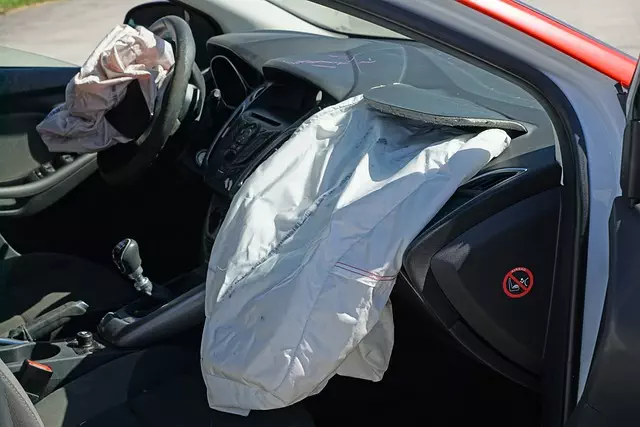SR-22 Insurance is a specialized, legal requirement for high-performance and recreational aircraft owners, protecting against accidents and financial penalties. Plans offer customizable coverage tailored to aircraft classification, usage, and individual needs, balancing affordability with comprehensive protection, including liability, medical payments, and in-air incidents. Key factors influencing premiums include aircraft make/model, driver record, required coverage levels, location, and pilot age/hours. Lowering costs involves strategic comparisons of quotes from major and niche insurers, policy adjustments, clean driving records, bundled policies, and timely payments. Avoiding pitfalls includes thorough reviews, continuous coverage, and tailored plans to prevent penalties and ensure adequate protection for this unique insurance need.
Looking for affordable SR-22 insurance? Understanding the requirements and exploring various plan options can save you significantly. This comprehensive guide breaks down everything you need to know about SR-22 coverage, from insuring high-risk drivers to navigating factors affecting premium costs. We’ll walk you through choosing the right policy, top insurers, comparing SR-22 vs. conventional car insurance, and strategies to lower your expenses – all tailored to help you find the best and most budget-friendly SR-22 insurance plans.
Understanding SR-22 Insurance Requirements

When it comes to aviation, SR-22 insurance is a necessary component for any pilot or aircraft owner. These specific insurance plans are designed to meet the requirements set forth by law for aircraft with high performance and/or recreational use. The primary purpose of SR-22 Insurance is to ensure financial protection in the event of an accident, providing coverage for damages to both the aircraft and third parties.
Understanding these requirements is crucial for pilots and owners alike. In many places, certain types of aircraft, particularly high-performance or recreational planes, must carry this specialized insurance. Non-compliance can result in severe penalties, including fines and grounding of the aircraft. Therefore, it’s essential to choose an SR-22 insurance plan that aligns with your aircraft’s classification and usage, ensuring both legal adherence and adequate protection for your investment.
Types of SR-22 Insurance Plans

When it comes to SR-22 insurance, there are several types of plans available, each catering to different needs and budgets. The primary purpose of an SR-22 is to prove financial responsibility and maintain state-mandated coverage levels for pilots and aircraft owners. Typically, these policies include liability coverage, which protects against damage or injury to others, as well as collision coverage, which covers repairs or replacement of your own aircraft in the event of an accident.
Standard SR-22 plans offer a balance between comprehensive coverage and affordability. They typically cover common risks associated with aviation, including mechanical failures, weather-related incidents, and third-party liabilities. However, some policies may exclude specific high-risk activities or areas, so it’s essential to review the terms carefully. Customizable options allow for adjustments based on individual preferences, such as adding personal property coverage or waiving certain deductibles, ensuring that you only pay for what you need.
Factors Affecting SR-22 Premium Costs

Several key factors significantly influence the cost of SR-22 insurance premiums. Firstly, the make and model of the aircraft play a crucial role; high-performance or older planes may incur higher costs due to repair and replacement parts availability and potential safety considerations. Secondly, the driver’s record is essential; safe driving history can lead to lower rates, while accidents or violations will raise them.
Additionally, the level of coverage required affects SR-22 insurance plans. Higher liability limits or comprehensive coverage options naturally increase premiums. Location also matters; regions with higher aviation activity or natural disaster risks may command higher prices. Finally, age and flight hours of the pilot can impact costs, with younger or less experienced pilots potentially facing higher SR-22 insurance expenses.
How to Get Affordable SR-22 Coverage

Getting affordable SR-22 insurance requires a strategic approach. Firstly, compare quotes from multiple insurers to identify the best rates. Online platforms and comparison tools can make this process efficient by offering side-by-side comparisons of policies and premiums. Secondly, consider your specific needs and risk profile. Customizing your policy by adjusting coverage limits or deductibles can significantly impact costs. Thirdly, maintain a clean driving record; tickets and accidents drive up insurance prices, so staying accident-free lowers your rates. Lastly, bundle your SR-22 with other policies like home or auto insurance to take advantage of multi-policy discounts offered by many companies.
Top Insurers for Low-Cost SR-22 Policies

When searching for low-cost SR-22 insurance plans, it’s essential to consider top insurers who specialize in this niche. Companies like Progressive, Geico, and Allstate are renowned for offering competitive pricing on SR-22 policies, making them popular choices among drivers in need of affordable coverage. These insurers have robust online platforms where customers can easily request quotes, compare options, and purchase policies within minutes.
In addition to these big names, smaller regional insurance providers also excel in providing cost-effective SR-22 coverage. Companies like State Farm, Farmers Insurance, and The General are known for their personalized customer service and tailored policy options. By comparing rates from both major and niche insurers, drivers can secure quality SR-22 insurance at prices that fit their budgets without compromising on essential protections.
SR-22 vs. Conventional Car Insurance: Comparison

When it comes to aviation, having the right insurance is non-negotiable, especially for pilots operating smaller aircraft like the SR-22. SR-22 insurance plans are specifically designed to cover the unique risks associated with this high-performance aircraft. Unlike conventional car insurance, which typically focuses on protecting against common road hazards, SR-22 insurance accounts for the additional perils that come with flying, such as in-air incidents, mechanical failures, and weather conditions.
SR-22 insurance plans offer comprehensive coverage, including liability protection, which is a legal requirement for pilots. This ensures that in the event of an accident involving property damage or personal injury, the policyholder is financially secured. Moreover, these plans often include medical payments coverage, which can be invaluable in case of on-air emergencies where immediate medical attention is required. By comparing SR-22 insurance to conventional car insurance, pilots can clearly see the distinct advantages tailored to their specialized needs.
Tips for Lowering Your SR-22 Insurance Expenses

Lowering your SR-22 insurance expenses can be achieved through several strategic moves. First, maintain a clean driving record by adhering to traffic rules and avoiding accidents or moving violations. SR-22 insurance is typically more expensive for drivers with a history of reckless behavior on the road. Regularly review your policy to ensure you have the right coverage; sometimes, reducing coverage amounts can save money without compromising protection.
Additionally, shop around for quotes from different insurers as rates can vary significantly. Consider paying in full rather than opting for monthly installments, as interest charges can add up over time. If you’re a safe driver and maintain good policy adherence, inform your insurance company; they might offer loyalty discounts or rewards programs to retain your business.
Common Mistakes to Avoid When Buying SR-22 Insurance

When purchasing SR-22 insurance, it’s crucial to steer clear of certain pitfalls that could significantly impact your coverage and financial stability. A common mistake is assuming all policies are created equal; every SR-22 plan varies in terms of deductibles, liability limits, and additional coverages offered. Thoroughly compare different quotes from multiple insurers to find a policy tailored to your specific needs and budget. Neglecting to review the fine print can also lead to misunderstandings later on. Understand the exclusions, conditions, and limitations outlined in the policy document to avoid unpleasant surprises when making claims.
Another mistake to avoid is underestimating the importance of maintaining continuous coverage. SR-22 insurance is mandatory for specific license types and non-compliance may result in severe penalties. Ensure you keep your policy active by paying premiums on time and promptly notifying your insurer of any changes that could affect your coverage, such as address or vehicle ownership shifts.
Case Studies: Successful SR-22 Cost Savings Strategies

Many pilots and aviation enthusiasts have successfully implemented cost-saving strategies for their SR-22 Insurance plans, proving that keeping expenses low is achievable. One common approach is to compare quotes from multiple insurance providers. The SR-22 market can vary widely, with some companies offering competitive rates for specific demographics or risk profiles. By shopping around, policyholders can often find a provider who aligns with their needs and budget.
Another effective strategy is to review and adjust the coverage limits. While comprehensive coverage is essential, customizing the plan to fit individual flying habits and experience levels can reduce costs significantly. For instance, younger pilots or those with fewer flight hours might opt for lower liability limits or specific endorsements, saving money on unnecessary coverage.
